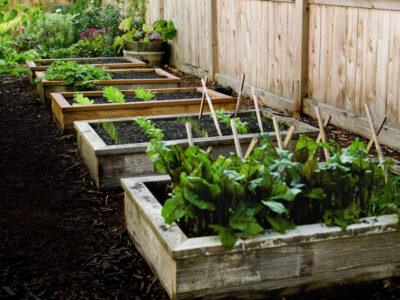
Image source: Popular Mechanics
A successful vegetable garden is the result of more than physical work. It is also the result of mental work in devising strategies for overcoming challenges such as space issues, pest problems and other challenges. And one of the biggest challenges that a vegetable gardener may have is dealing with drought.
Don’t get me wrong, I love sundried tomatoes, but not when they’ve been dried on the vine! Hot summer months that are short on rainfall can spell disaster for the home vegetable garden – particularly once water restrictions start coming into force.
Fortunately, there are some proven strategies for dealing with drought.
Plan Ahead
A good practice for any gardener — and especially for a gardener who lives in an area that is prone to drought — is to plan how your garden will look once the plants have matured. Try to figure out how much of each vegetable you will need to plant in order to feed your family, and then plant in a configuration that keeps plants with similar water needs close together.
And of course, remember that some vegetables and varieties do better in dry areas, so try to choose plants that are suited to where you live. There are several heirloom varieties from the Mediterranean that have a well-earned reputation for being drought tolerant.
Drought-tolerant crops include beans, chard, parsnips, Roma tomatoes, sugar baby watermelons, and most herbs. This doesn’t mean that these plants don’t require some watering, though.
The Secrets Of Sea Minerals To Grow More “Nutritionally-Dense Food” Than You Can Possibly Eat!
Cool weather crops in general do not tolerate drought as well. These include Brussels sprouts, cauliflower, kohlrabi, lettuce and spinach.
Another tip: Planting the crop when there is rain allows the plant to establish a better root system, which can go down further into the ground to seek moisture. The more mature a plant is, the better its chances will be against drought.
Also, space your plantings so that when the plants are mature, their leaves will just be touching. It is recommended that you plant seeds in a hexagonal off-set pattern instead of rows. This will have the effect of creating small micro-climates, allowing the plants to serve as protection for each other during the dryer months. Even among plats, there is strength in numbers!
Companion planting can also help with providing more nutrients to your plants. And while companion planting does not directly affect moisture, it does make for healthier and hardier plants that are more likely to do well in drought conditions.
Keep the Moisture with Mulch, Compost and Containers
Amending the soil with organic mulch and compost will help it to retain moisture, making the environment in your garden considerably more plant-friendly. These mulches should be applied once or twice a year in a two- to four-inch thick layer. A good mulch can reduce your watering needs by as much as 50 percent.
Story continues below video
Types of organic mulch include shavings, compost, rice hulls, bark, straw, grass clippings, dried leaves, pine needles and other similar materials.
Finally, gardens that are planted in raised beds hold the moisture better than gardens that are level with the ground. If part or all of your vegetables can be planted in raised beds, your vegetables have a better chance of making it through a dry summer.
Watering
During an extended drought, you will still have to water your garden. But this, too, can be done strategically. Watering should be done when it is cool and when less water will evaporate off the top of the soil due to increased heat and wind.
Watering in the morning is preferable to watering in the evening, however, because if plants stay damp overnight, it can make them more susceptible to fungus and bacterial diseases.
If you want to try an inexpensive low-tech method of watering, try using ollas, which simply are narrow-necked clay pots buried in the ground which perspire gradually, giving your vegetables plenty of water. The neck remains above the ground, allowing you to fill them up. Read more about this method here.
Irrigation
If you’re a higher tech gardener – or want to be – you might also consider installing an irrigation system which is much more efficient than watering by hand or with a sprinkler. A drip or trickle system applies water to the soil slowly and uniformly in order to minimize the amount of water that is lost to evaporation.
Because drip holes are prone to becoming clogged with salt and mineral particles, it is recommended that only filtered water be used in such systems. Fortunately, cartridge-type filters are widely available and are reasonably inexpensive and can be obtained from nurseries, hardware stores and farm supply houses.
Control Weeds
Finally, you need to control the weeds in your garden which will compete with your vegetables for moisture and rob them of valuable nutrients.
Keeping these tips in mind will help your vegetable garden to be successful even through a hot and dry summer. And just remember, the cooler temperatures of fall are on their way – but until then it is up to you to help your veggies through the dry spell.
What drought gardening tips would you add to the list? Tell us in the section below:
 Off The Grid News Better Ideas For Off The Grid Living
Off The Grid News Better Ideas For Off The Grid Living




